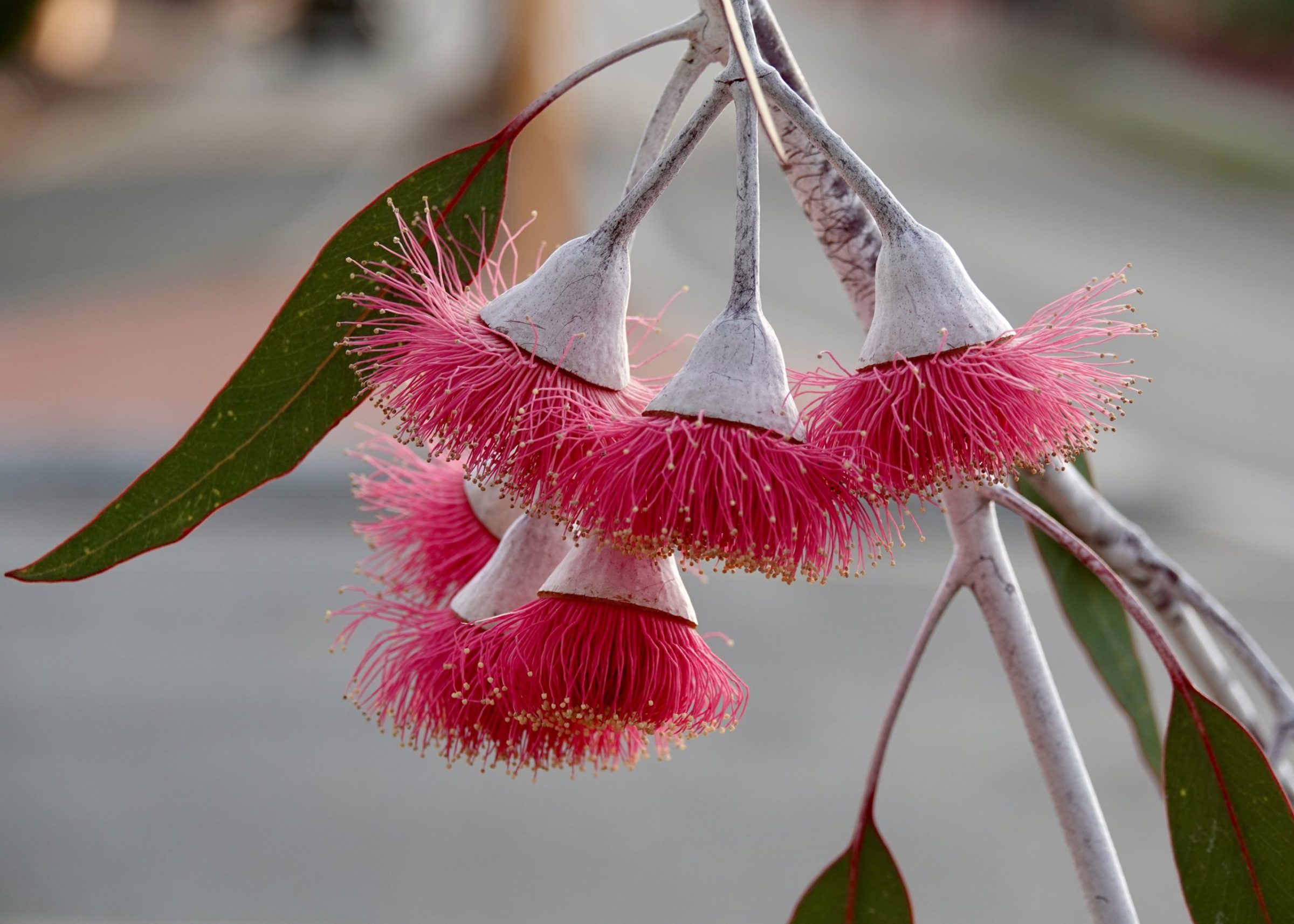Literally speaking, the middle of the road is usually dangerous, and soulless.
Metaphorically speaking, “M.O.R” signifies music, visual art or literature that is bland, dull, pedestrian.
This post’s actual middle of a road is, however, “safe” only in the desirable sense, and its musical content is highly creative, very playful.
(photo copyright Doug Spencer)
When I took the photo, late in the afternoon of Anzac Day 2020, my beloved and I were both standing right in the middle of the road, in the “island” of a roundabout on West Leederville’s Railway Parade.
One very pleasing aspect of many of Perth’s streets and roads – even its freeways – is the care taken to “green” their verges, usually with intelligently selected, mostly “native” species.
Southwestern Australia’s astonishing array of endemic, flowering plants ensures that the end result is not merely green, but multicoloured, ever-shifting, in tune with the year’s six seasons.
Yes, six, as its first human inhabitants recognised! Click here
The entire natural range of many southwestern Australian plants is remarkably small – in some cases, a single hilltop.
Corymbia ficifolia – a red-flowering tree, now planted on many of the world’s streets – naturally occurs within a very tiny dot on the map of Western Australia’s “Deep South”.
I am almost sure that “our” weeping gum on the roundabout’s island is Eucalyptus caesia, a southwest WA mallee that naturally occurs at the base of scattered granite outcrops.
Its weeping form, subspecies magna, is known as Silver Princess.
—
Willows enjoy a de facto monopoly of weeping tree music, and one song is by far the willows’ greatest hit.
As is true of many hit songs, popular artists, revered books, albums and authors, Willow Weep For Me initially drew only a flurry of publishers’ rejection slips.
Click here to discover why.
My favourite of countless vocal versions was delivered by Sarah Vaughan in a Chicago nightclub, in August 1957.
It survives via her album Sarah Vaughan at Mr Kelly’s.
“Sassy’ (aka “the divine one”…and both nicknames were apt) was accompanied by bassist Richard Davis, pianist Jimmy Jones and drummer Roy Haynes.
As you’ll discover, this performance is perfect proof that the most “perfect” version is not necessarily the “best”; some artists turn mistakes into gold:
In February 1991 Canadian pianist Paul Bley (1932-2016) recorded Changing Hands, an excellent, entirely-solo album for a now defunct little label.
If profile or market share is your yardstick, Bley was a moderate success – a “loser”, in Trump-speak.
If creativity, originality/singularity, and improvisatory/pianistic skill are the criteria, he was one of the greats.
In terms of “influence on others”, Bley had very few peers among improvising pianists in the second half of the 20th century – arguably, only Bill Evans, Herbie Hancock and McCoy Tyner.
Bley was surely Keith Jarrett’s single biggest influence; in a world without Jarrett’s oeuvre (and I love a deal of Jarrett’s music), Bley’s would have existed, regardless, unchanged by Jarrett’s absence.
I strongly suspect that the reverse would not be true.
Bley’s Changing Hands included Willow – his treatment of Willow Weep For Me…and much more, besides.
You can hear it, for free, here
That said, if you have access to the likes of Deezer you could hear it in fuller sonic glory.
This excerpt from a 1998 documentary about Paul Bley is revealing.
It includes a solo version of his Lucky; deep lyricism, with spine:
